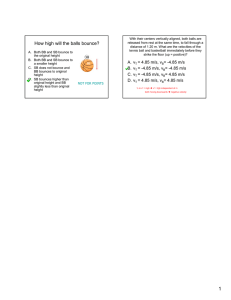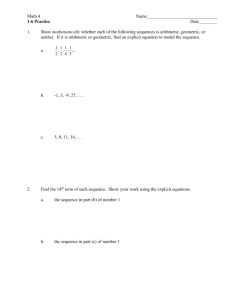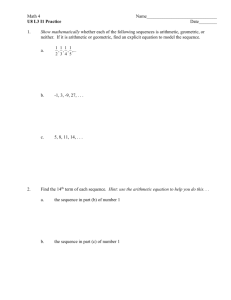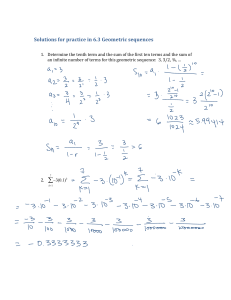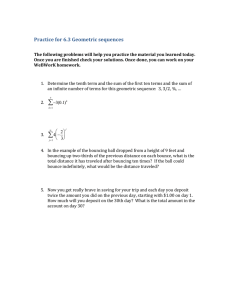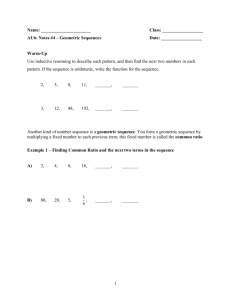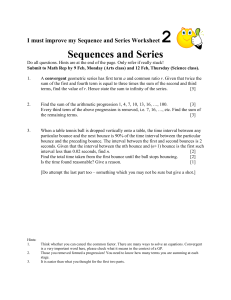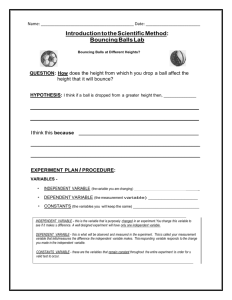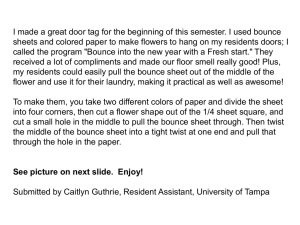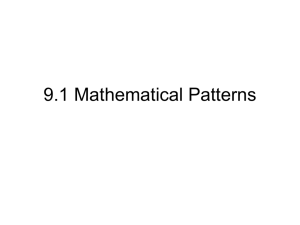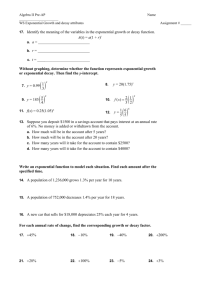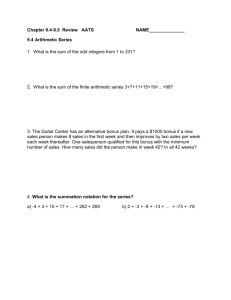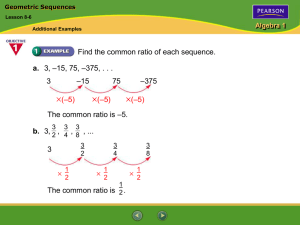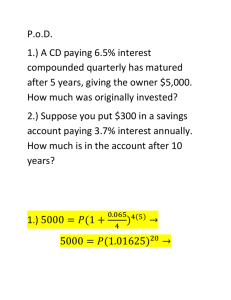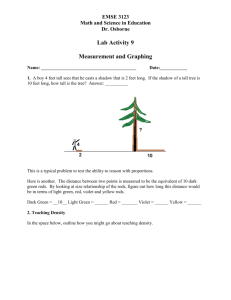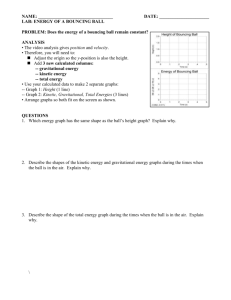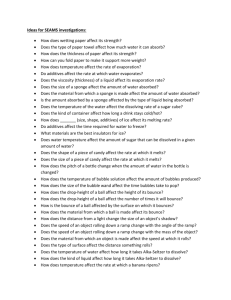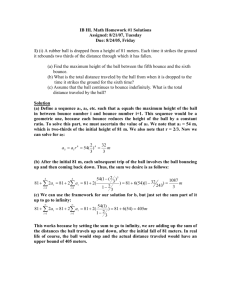Solution to Ball Bounce Problem Quiz #S2
advertisement
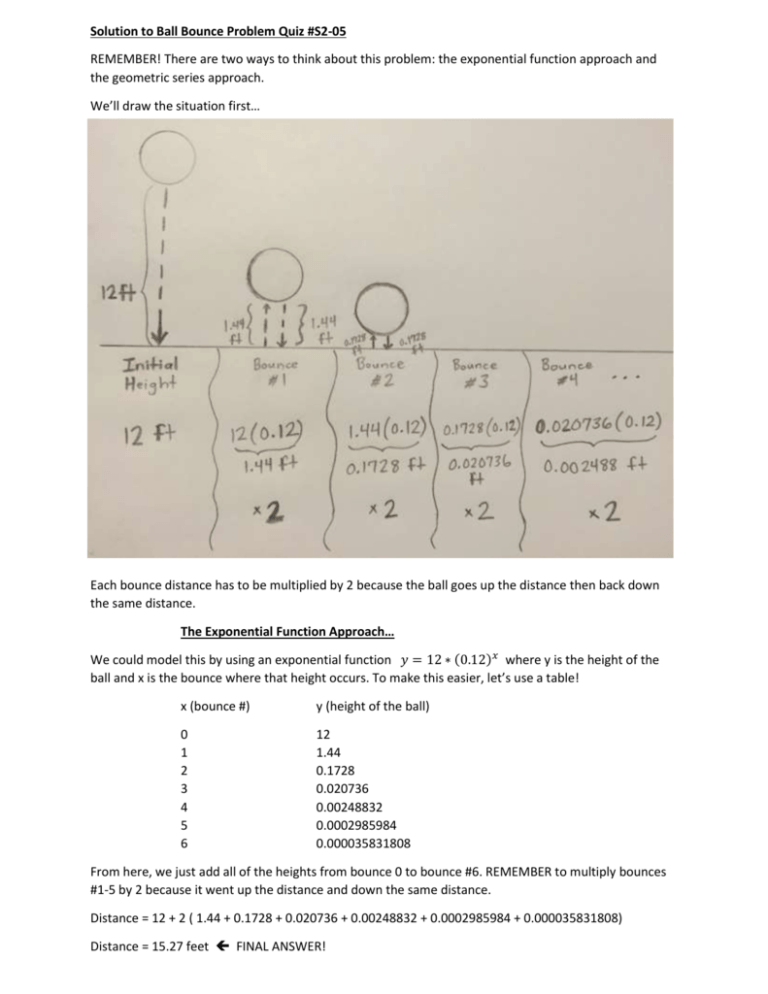
Solution to Ball Bounce Problem Quiz #S2-05 REMEMBER! There are two ways to think about this problem: the exponential function approach and the geometric series approach. We’ll draw the situation first… Each bounce distance has to be multiplied by 2 because the ball goes up the distance then back down the same distance. The Exponential Function Approach… We could model this by using an exponential function 𝑦 = 12 ∗ (0.12)𝑥 where y is the height of the ball and x is the bounce where that height occurs. To make this easier, let’s use a table! x (bounce #) y (height of the ball) 0 1 2 3 4 5 6 12 1.44 0.1728 0.020736 0.00248832 0.0002985984 0.000035831808 From here, we just add all of the heights from bounce 0 to bounce #6. REMEMBER to multiply bounces #1-5 by 2 because it went up the distance and down the same distance. Distance = 12 + 2 ( 1.44 + 0.1728 + 0.020736 + 0.00248832 + 0.0002985984 + 0.000035831808) Distance = 15.27 feet FINAL ANSWER! The Geometric Series Approach… Observing the picture above, we see that part of this problem is a geometric sequence. The term number “n” is the bounce number. We’ll use the formula from the formula chart… 𝑛 ∑ 𝑎𝑘 = 𝑘=1 𝑎1 ∗ (1 − 𝑟 𝑛 ) 1−𝑟 For us, a1 is 1.44, the common ratio is 0.12, and n = 6 because we want to add the first 6 bounces. 6 ∑ 1.44 ∗ (0.12)𝑛 = 𝑛=1 1.44 ∗ (1 − 0.126 ) = 1.63636 1 − 0.12 REMEMBER! We need to multiply the sum of these bounces by 2… 1.63636 * 2 = 3.27272 Finally, add the initial 12… 12 + 3.27272 = 15.27 feet FINAL ANSWER! Two different methods lead to the same answer. Take your pick!

